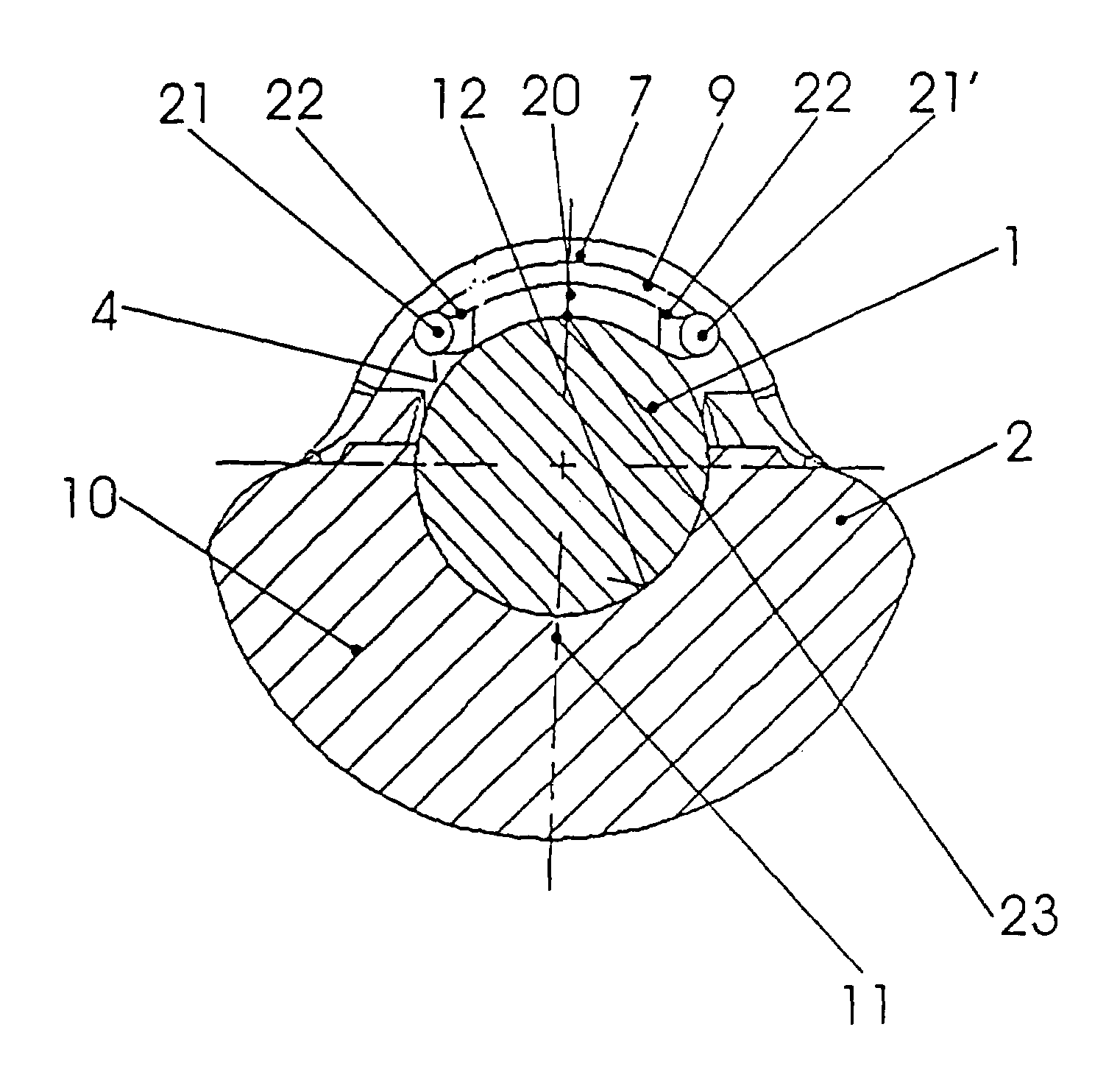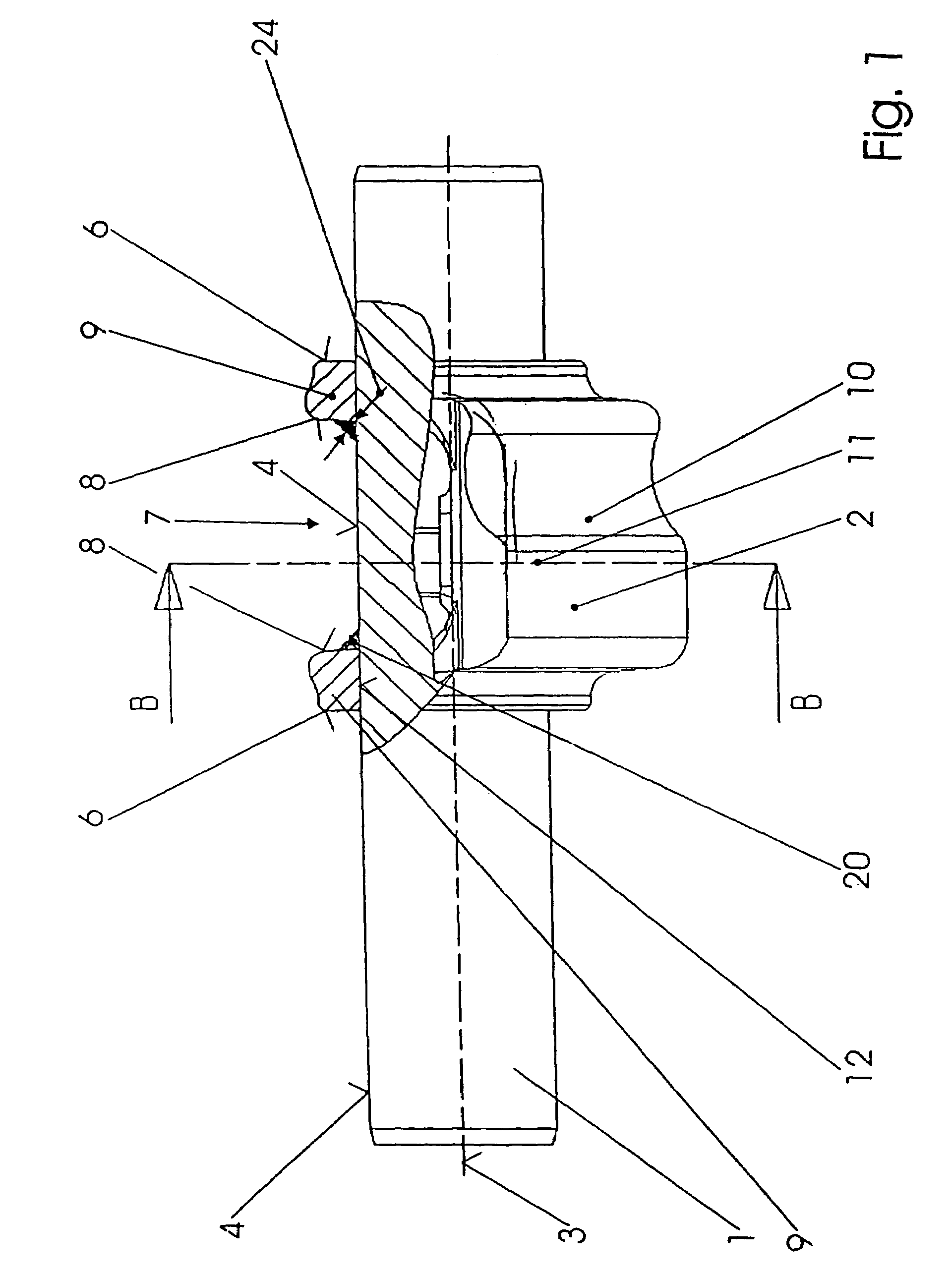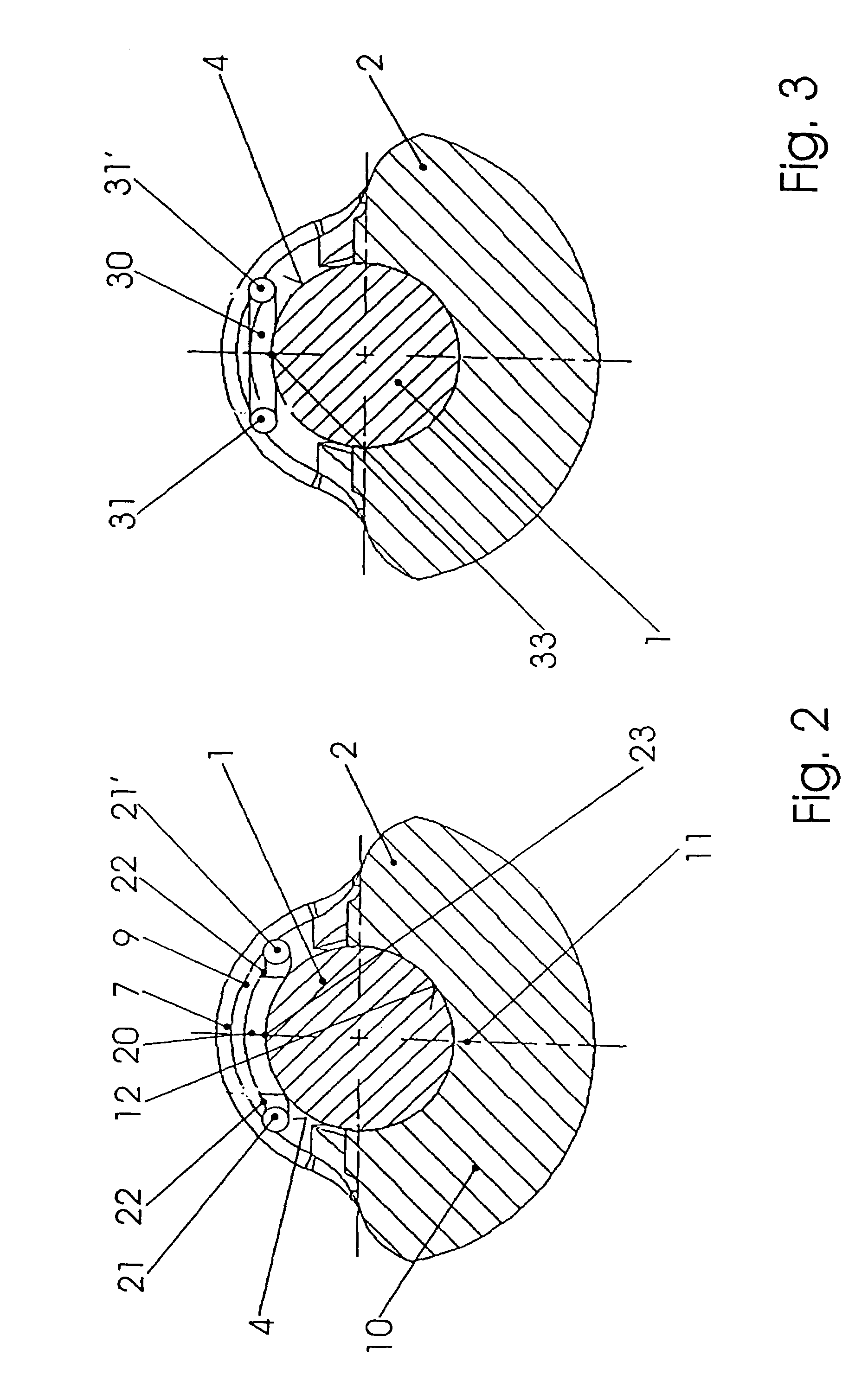Shaft comprising a part connected thereto by welding
a technology of a shaft and a connection part, applied in the field of shafts, can solve the problems of premature fracture, reducing long-term strength, etc., and achieve the effect of restricting the introduction of hea
- Summary
- Abstract
- Description
- Claims
- Application Information
AI Technical Summary
Benefits of technology
Problems solved by technology
Method used
Image
Examples
Embodiment Construction
[0025]In FIG. 1 and FIG. 2, a shaft is denoted by 1, its axis of rotation is denoted by 3 and a co-rotating element secured to the shaft 1 is denoted by 2. The shaft is in this case a balancing shaft, while the co-rotating element is a balancing weight which is located on the cylindrical seating surface 4 of the shaft 1. The shaft 1 is in this case cylindrical over its entire length, but could also be stepped and increased in diameter on one side of the element.
[0026]The element 2, in this case a balancing weight, has two outer surfaces 6 and a cutout 7 extending only over part of its circumference, forming two inner end faces 8. These end faces generally lie transversely with respect to the axis 3, in this specific case normally with respect to the axis 3. In this way, a right-angled fillet is formed between the surfaces 6, 8 and the cylindrical seating face 4 of the shaft, and this fillet is a suitable location for the welding. The surfaces 6, 8 do not have to be axially normal; i...
PUM
| Property | Measurement | Unit |
|---|---|---|
| diameter | aaaaa | aaaaa |
| diameter | aaaaa | aaaaa |
| gravity | aaaaa | aaaaa |
Abstract
Description
Claims
Application Information
 Login to View More
Login to View More - R&D
- Intellectual Property
- Life Sciences
- Materials
- Tech Scout
- Unparalleled Data Quality
- Higher Quality Content
- 60% Fewer Hallucinations
Browse by: Latest US Patents, China's latest patents, Technical Efficacy Thesaurus, Application Domain, Technology Topic, Popular Technical Reports.
© 2025 PatSnap. All rights reserved.Legal|Privacy policy|Modern Slavery Act Transparency Statement|Sitemap|About US| Contact US: help@patsnap.com



